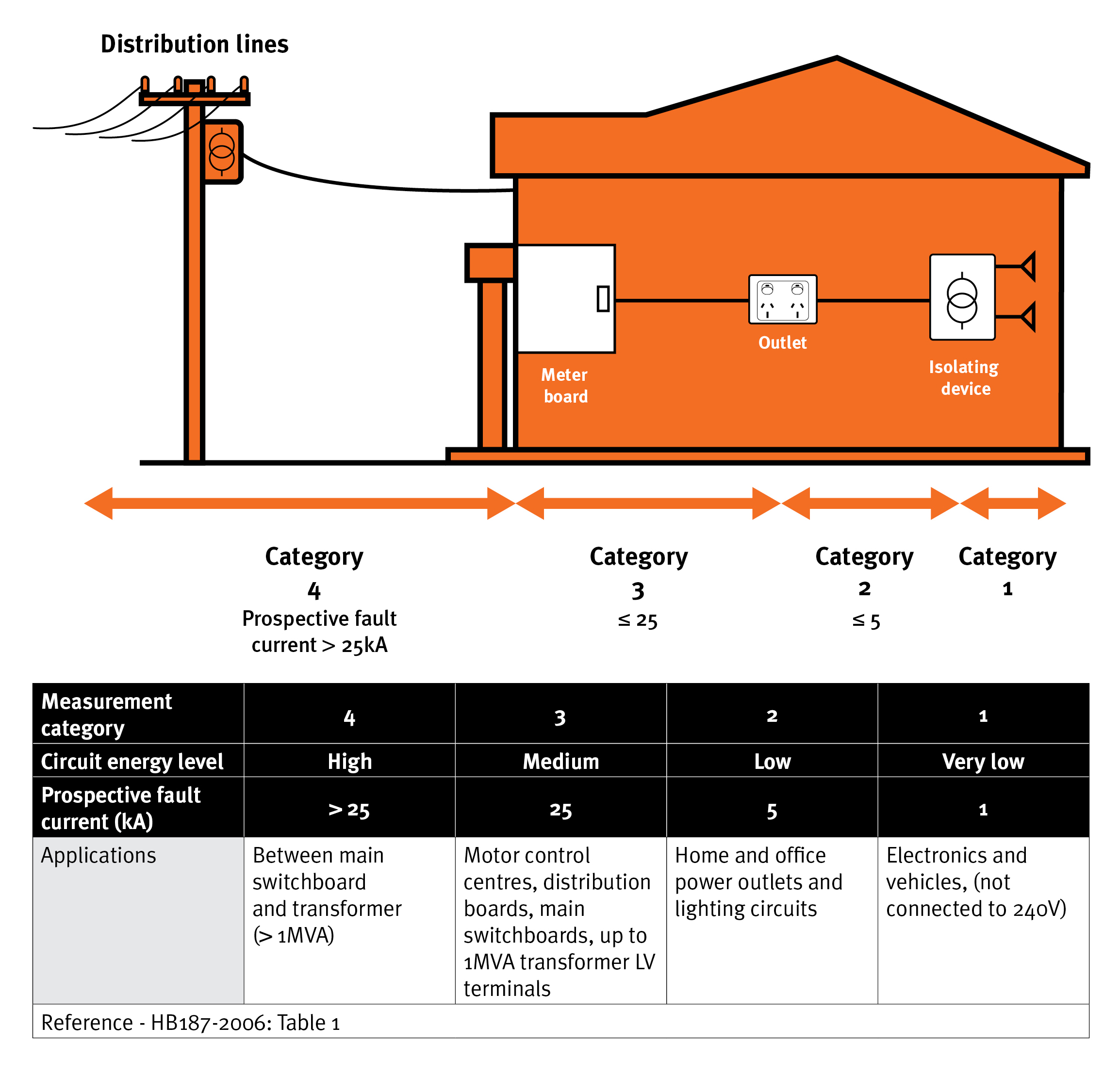There have been some serious electrical incidents involving multimeters recently which highlight the risk of using them incorrectly rated or inadequately insulated for the job.
To meet Australian safety requirements, a multimeter must be designed, constructed, and tested to Australian safety standard AS 61010.1:2003, which is based on international standard IEC 1010. It should also be verified by independent lab testing.
A multimeter tested to these standards has been checked to ensure its internal components are designed and constructed to protect the operator from hazards including electric shock and burns in specific high electrical risk environments.
A marking alone is no guarantee the multimeter has been tested to the standard, particularly if it was purchased overseas. Always seek further evidence the product has been tested by a reputable lab to the correct electrical safety standard.
A multimeter complying with the Australian standard should also be supplied with instructions for safe use and maintenance including:
- the intended use of the equipment for which it is designed for measurement
- instructions for use (in English)
- an explanation of the measurement category ratings marked on the meter, such as category 4.
Measurement category
The measurement category rating of multimeters considers the working voltage and a maximum transient voltage that could be encountered in a particular electricity network environment.
The measurement category on the meter will often have an accompanying working voltage rating, however this voltage rating should not be confused with the measurement category rating. Even a momentary voltage spike or peak can have catastrophic results on an underrated multimeter.
The voltage rating is for the general operating condition of the multimeter, while the measurement category rating withstands the transients and spikes of high energy that can be encountered on electricity distribution circuits. The rated working voltage is defined as the highest rms value of AC or DC voltage that could be applied across the internal insulation of the device. However, the ability of the multimeter to safely withstand a spike or transient much higher than the working voltage has been incorporated into the measurement category rating used in the standard.
When measuring distribution circuits, even the smallest breakdown in the internal insulation in a multimeter can trigger a substantial arc flash.
The Australian standard has four measurement categories to cover different levels of exposure to transient spikes or spikes of voltage that can occur from a mains distribution system:
- Category 1 – measurements on very low energy equipment not connected to electricity mains, such as secondary circuits in electronic equipment or automobile circuits.
- Category 2 – measurements on equipment connected to domestic electricity mains such as household appliances, tools, and equipment classified as low energy equipment with a potential fault current up to 5kA.
- Category 3 – measurements on a building’s electrical installation such as wiring, wall socket outlets, junction boxes and fixed motors classified as a medium energy circuit with up to 25kA fault current capacity.
- Category 4 – measurements on sources of voltage supply such as electricity meters, primary fuses and services classified as a high energy circuit with a potential fault current of greater than 25kA.
Multimeters are marked with these four categories expressed in Roman numerals I, II, III and IV, respectively.


Higher category ratings indicate greater internal clearances and stronger insulation built into the multimer to safely withstand peak transient voltages and fault currents. The category rating also considers the likely source impedance of the transient which on a mains distribution network can deliver significant energy. A category 2 meter, even if it has a higher marked voltage rating than a similar category 3 meter, may not be able to withstand a transient voltage and potential current flow encountered in a commercial building installation.
The safety rating of the multimeter can also be seriously compromised by sub-standard leads and internal fuses. Multimeter leads should also carry a measurement category rating that should be the same as the multimeter or better. Multimeter leads must be kept in good condition. Cuts and damage to the lead’s insulation creates a risk of shock, just like any other damaged cable.
Always replace internal fuses with the correct rating and type of fuse in your multimeter, as specified by the manufacturer. Cheaper multimeters may use glass fuses instead of higher quality, higher rupturing capacity (HRC) fuses designed to withstand voltage transients or spikes. Multimeter HRC fuses are designed to contain any arc flash or rupture that could otherwise compromise the multimeter’s own internal safety and injure the user.
Remember - check your multimeters are safe for their intended use by:
- looking for the correct electrical safety standard
- seeking evidence of independent type testing to that standard
- checking warning labels or markings on the multimeter
- understanding of right measurement categories for the task.
Measurement is one of the few situations where live work is legal, so:
- choose the correct highest measurement category for the range of work you do
- select a quality multimeter supported by independent type testing
- buy from reputable suppliers.
Further information
For more information, Standards Australia has a detailed guide to selecting a safe multimeter in HB187-2006.